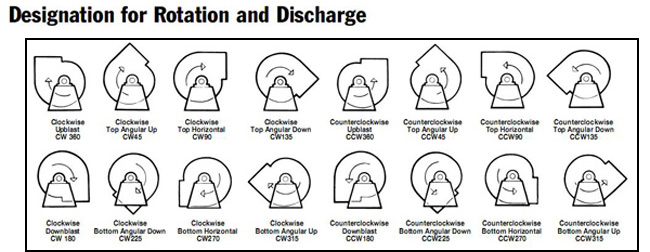|
|||
| Stocking distributor of commercial radial blowers, commercial radial blade blowers, commercial direct drive blowers, commercial blowers direct drive, direct drive, direct drive fans, direct drive blowers, direct drive centrifugal fans, direct drive centrifugal blowers, direct drive radial blade blowers, direct drive OEM fans, direct drive commercial fans, direct drive industrial fans, direct drive OEM blowers, direct drive commercial blowers, direct drive industrial blowers. | |||
| Orientation of Fan and Motor | |||||
 |
|||||
| The drawing above illustrates the Amca motor position standards for arrangement 1 and 3 fans (arrangement 1 shown). The location of the blower motor is determined by facing the drive side of the fan and designating the motor position by letters w,x,y, or z, in accordance with the diagram show above. | |||||
 |
|||||
| Direction of rotation is
determined from drive side of the fan. on single inlet fans, the drive side is always considered the side opposite the fan inlet. the direction of discharge is determined in accordance with the diagrams shown above. the angle of discharge references the vertical axis of the fan and is designated in degrees above or below that reference axis. on fans inverted for ceiling suspension or side-wall mounging, the discharge is determined when the fan is testing on the floor. |
|||||
